Accuracy
I was able to eliminate JSB Exact, and JSB Exact Heavy pellets just from 10 yard testing. The Heavies shot ½ inch groups at 10 yards. The regular JSB Exacts were strung out about two and a half inches across the target. Crosman Premier Hollow Points shot pretty well, mostly, but one spun off to the left about six inches, and one went almost a foot high, and missed the pellet trap entirely!
It looks like my factory tuned Marauder does not really like any of the lighter pellets. Although the Beeman FTS and JSB Exact Express pellets showed promise at 10 yards, the 25 yard groups were both over two inches. I believe both pellets are around 8 grains, and the Crosman Hollow Points are 7.9 grains.
I had reported on the MarauderAirRifle forum that my rifle preferred Beeman Kodiac Pellets (10.6 grains) over the Crosman Premier Ultra Magnum pellets (10.5 grains). I had done most of the testing with these two pellets at 10 yards, with the barrel band in place. At 25 yards, without the barrel band, the groups showed something else.
25 Yard Groups - Kodiac Match Pellets - 0.868" and 0.74" center-to-center
Crosman Premier Ultra Magnum Pellets - 0.445" and .430" center-to-center
50 Yard Group, different day, Crosman UltraMag - 0.9" C.T.C.
Those are 10-shot groups. I feel 10-shot groups give a more realistic picture of how a gun will shoot than lucky 3-shot or 5-shot groups. I knew I had made a mistake in calling the Kodiacs the favorite when I shot the first 5 heavy Premiers at 25 yards. They all went into one tiny bughole. The next 5 opened up the group a little, but the end results are still pretty good. My American dime measures just a little under 0.7” in diameter, and it will easily cover both of the 10-shot, 25 yard groups shot with the heavy Premier domes.
I feel less dumb for having bought two tins of the Premiers, and only one of the Kodiacs. I did spend a good bit of time washing, and swabbing bits of lead flakes out of the Premiers though. The Kodiacs didn’t really need the cleaning, and although I’ve inspected more of the Kodiacs, while goofing around the field target course, I’ve found much fewer with imperfections and none with any lead flashing.
Pressurizing the Marauder
The protective cap is removed to show the Foster male quick-disconnect coupler. The manual is very specific about using the Foster #12FS female coupler to charge the rifle. This is the same type of coupler used to charge late-model Daystate and BAM pre-charged air rifles, among others.
The Marauder can be charged with compressed air or CO2. Out-of-the-box the Marauder is set up or a 2500psi charge of compressed air. To get it to run on CO2, you would need to purge any compressed air in the tube, by using the (included) depressurizing tool. To charge with CO2 also requires a fill adapter to use with a paintball tank. Using CO2 also requires a 2000psi pressure tune.
The Marauder is one of few PCP airguns that can be set up to run on a charge pressure from 2000 to 3000 psi. There are adjustments for hammer stroke length, and hammer spring preload. The velocity can be adjusted by turning the valve metering screw, which is on the right side of rifle, above the trigger group, and hidden below the top edge of the stock.
Shooting at 50 yards, I noticed that the rifle gets really sensitive to fill pressure. You can see from this group that the group strung out vertically, and strangely, to the left, as the pressure went down.
I guess I really only get about 20 good shots from a full 2500 psi charge. The gauge built into the rifle just about matches the gauge on my Hill pump. Recharging after 20 shots takes about 45 strokes of the pump, and the pump really doesn't get very warm. If you aren't shooting at longer distances, you can squeeze out 10 more shots, and then it takes about 80 pump-strokes to refill, and you should probably stop after 60 strokes to let the pump cool off a little bit.
Trigger (Continued)
I degassed the rifle, and finished tuning the trigger. I backed out the return spring screw again, and turned it back in until it just barely reset the trigger. Then I adjusted the 2nd stage, to remove most of the creep.
The trigger pull was very light, but I would sometimes miss the 2nd stage, and the gun would go off before I was really ready for it. Turning in the return spring screw maybe a sixth of a turn more fixed it.
You want to know what the trigger pull weight is? Hold onto your hats folks. The first-stage pull is right around 3 ounces, and the second-stage trips at 3.5-3.7. Ray, of the A-Team had reported that his trigger, “is set at 2.4 ounces for the first stage and breaks at 3.3 ounces.” I figured some gunsmith at Crosman had slicked up the trigger for him, or worked some other magic, but now I’m thinking it may just be a matter of personal preferences in setting the trigger, or maybe it’s just a minor difference in trigger pull gauges.
And on that bombshell. . .
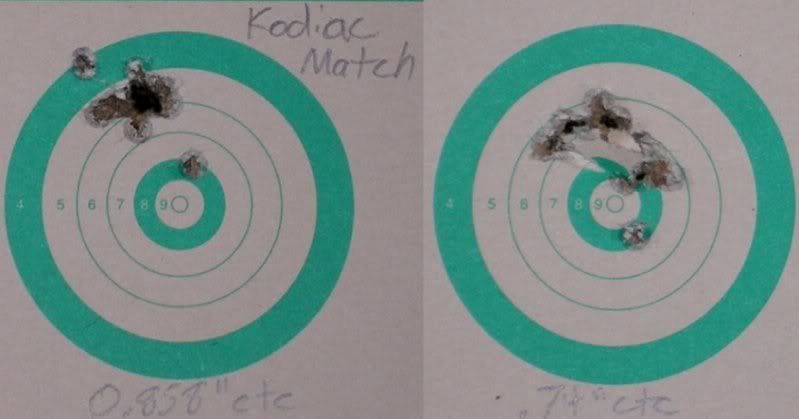
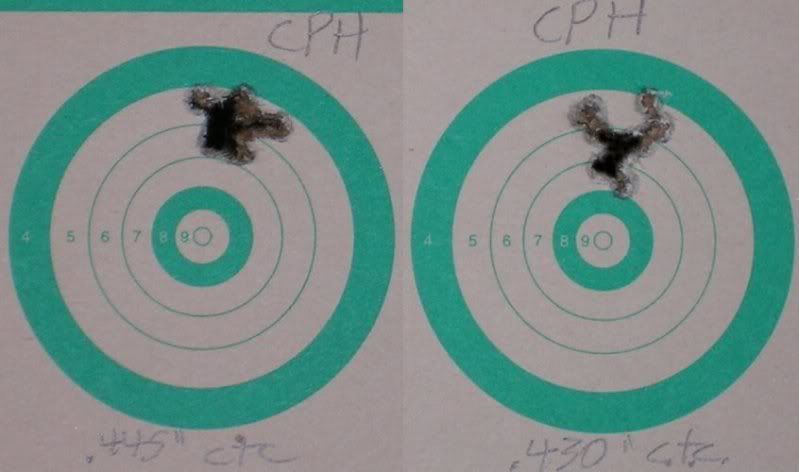
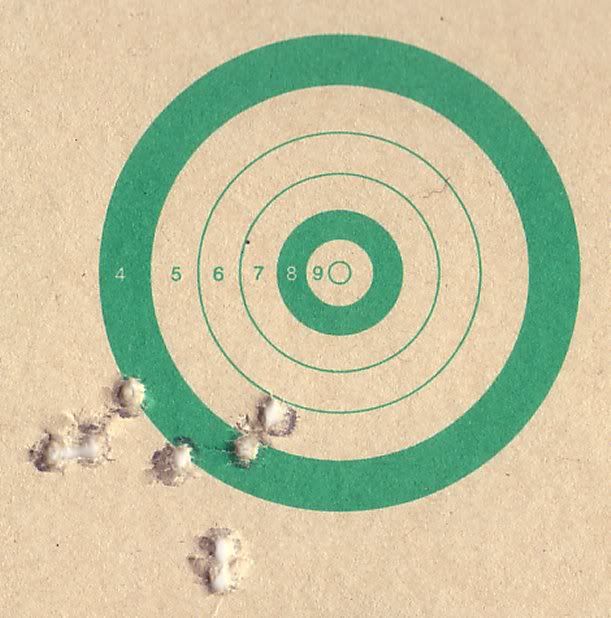
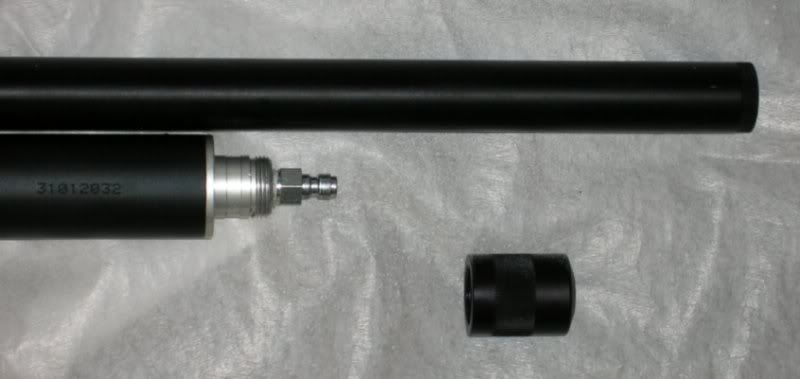
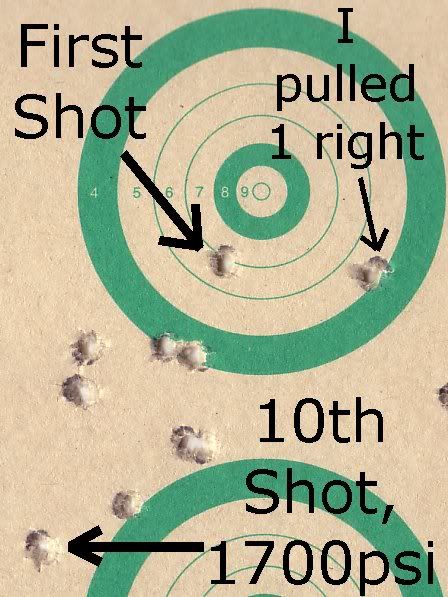
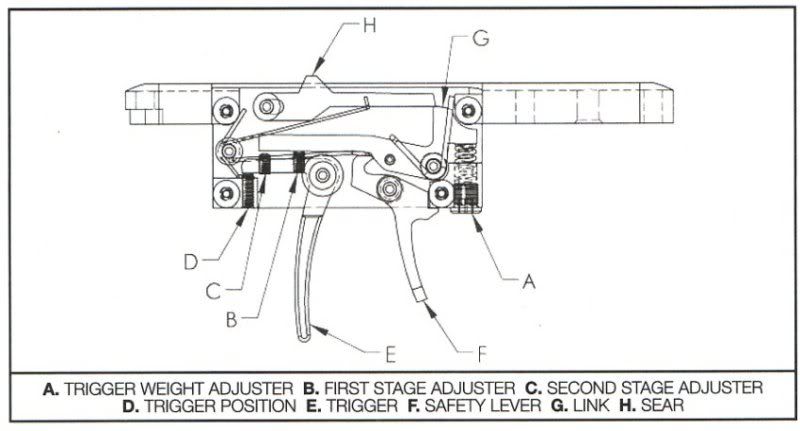
2 comments:
Excellent review. That's only in our PCP pneumatics under license :(
Post a Comment